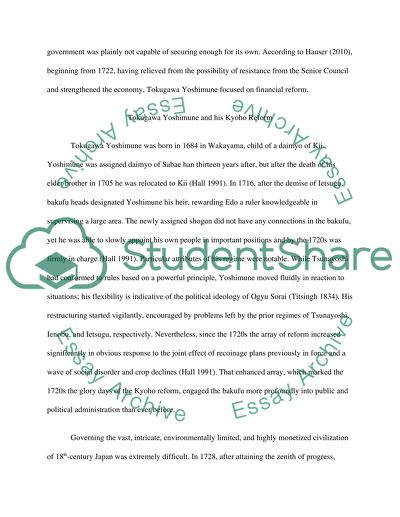Tokugawa Yoshimune and His Kyoho Reform Research Paper. Retrieved from https://studentshare.org/history/1438103-tokugawa-yoshimune-and-his-kyoho-reform
Tokugawa Yoshimune and His Kyoho Reform Research Paper. https://studentshare.org/history/1438103-tokugawa-yoshimune-and-his-kyoho-reform.


